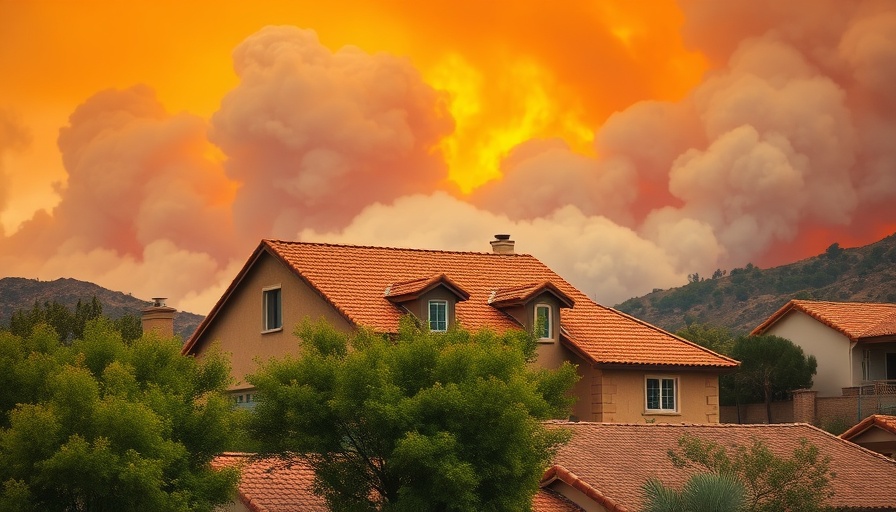
The Importance of Disaster Resilience in Home Buying
When it comes to buying a home, it's easy to get distracted by surface-level elements like the bright paint or the latest kitchen appliances. But beneath these aesthetics lies a much deeper consideration: disaster resilience. In our current era, with climate change drastically altering weather patterns and increasing the frequency of natural disasters, ensuring your new home is equipped to handle potential threats could be crucial for your safety and well-being.
Understanding the Risks of Climate Change
Thanks to climate change, severe weather events such as hurricanes, floods, and wildfires are becoming increasingly common, affecting communities across the country. In fact, flash flooding, record-breaking heat waves, and wildfires are now part of many regions' everyday realities. According to the Federal Alliance for Safe Homes (FLASH), understanding how to prepare for these risks is more vital than ever before, especially when selecting a home.
Choosing the Right Location for Safety
Even if your home is well-constructed, its location can play a significant role in determining how vulnerable it is to natural disasters. Different areas face different risks, and even slight changes in elevation can expose some properties to flooding while protecting others. When considering a new home, it's important to research local hazards.
You might look for neighborhoods with strong building codes, emergency response plans, and community-wide initiatives that mitigate risks. If you're eyeing properties in flood-prone areas, check FEMA's flood maps and consider looking into whether the community participates in resilience programs, like being designated a NOAA StormReady Community. These small details can greatly influence your home's safety and long-term value.
Investing in Sturdy Construction
You may be asking: what features indicate a disaster-resilient home? Sturdy construction is paramount. Notably, homes that adhere to rigorous building codes or those participating in programs like the FORTIFIED Home™ initiative are better equipped to withstand extreme weather. These homes might have strengthened roofs, impact-resistant windows, and elevated foundations that protect against flood damage.
But keep in mind that construction quality can sometimes be a mystery. That's why it's wise to prioritize inspections, not just for things like plumbing and wiring but also for structural integrity.
Actionable Insights for Homebuyers
When buying a home, knowledge is your best tool for making informed choices. Prepare your checklist for disaster resilience:
- Investigate local climate risks and understand the specific hazards in your area.
- Ensure the home complies with the latest building codes and ask about additional safeguards like storm shelters.
- Look for community resources and emergency plans that emphasize resilience.
Taking the time to examine these factors can empower you to make a safe and sound investment.
Future Trends and Resilience Planning
As we move into the future, our housing markets are likely to create a greater emphasis on resilience. With growing awareness about climate change's impacts, expect innovative construction techniques and smart design to take center stage. Homebuyers are more likely to factor in resilience against local weather patterns when they purchase. This trend benefits not only individual homeowners' safety but contributes to the overall sustainability of communities.
The Emotional Aspect of Preparing for Disasters
Being aware of the potential vulnerabilities in your new home can seem daunting, but remember, this knowledge equips you with the ability to make proactive choices. The peace of mind that comes from knowing your home can withstand disasters is invaluable. When your living space encourages a sense of safety and resilience, you're more likely to thrive in your environment.
Various aspects of your lifestyle also support sustainability. Whether it’s recycling efforts, composting, or participating in local initiatives to boost community preparedness, every small action acts as a contribution towards a bigger goal of resilience and sustainability. Embrace these practices for a brighter, safer future.
Ready to Make an Informed Decision?
If you’re considering buying a home, take the time to inspect not just the aesthetic, but also the resilience. Knowledge is power, and by understanding how to choose a disaster-resilient home, you’re making a thoughtful investment in your family’s future. Explore resources about sustainable living, join local environmental groups, and learn about the recycling centers in your area to further minimize your footprint while ensuring your safety.
 Add Row
Add Row  Add
Add 




 Add Row
Add Row  Add
Add 

Write A Comment